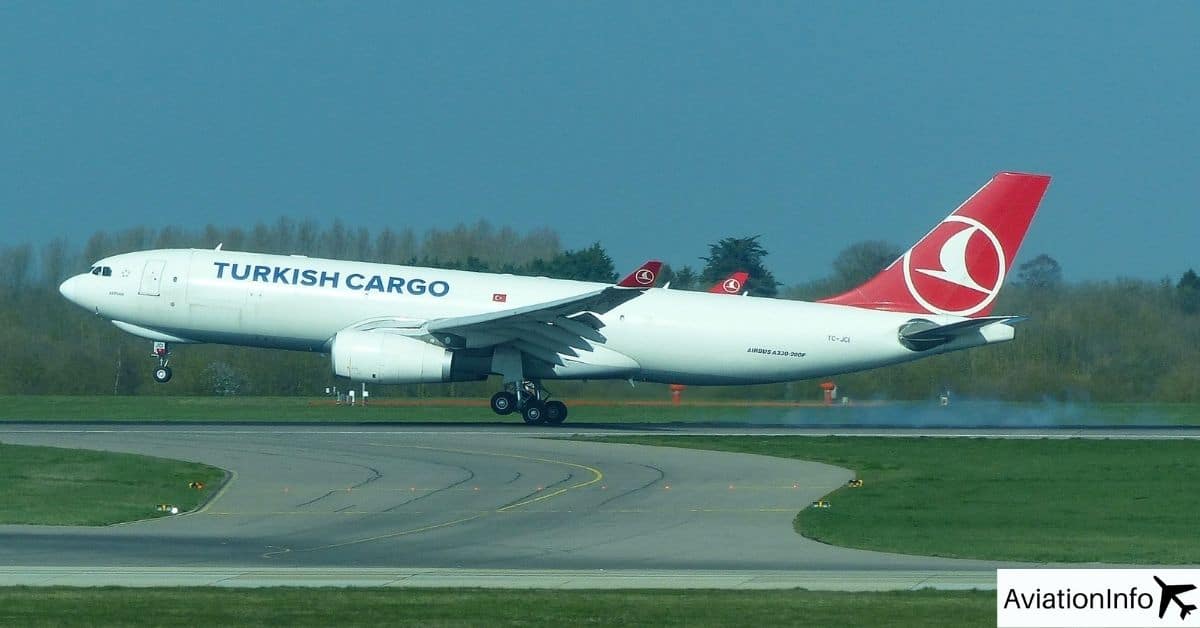During the landing phase of a flight, there are numerous outcomes that may occur depending on a number of factors.
On a scheduled commercial flight, the most common outcome is a full-stop landing.
However, for numerous reasons outlined below, there are instances in which an aircraft may perform a touch-and-go landing.
How Common Are Touch and Go Landings?
Touch-and-go landings are rarely performed during scheduled passenger flights. They typically occur during crew training flights or a late go-around.
Why do Planes Touch and Go?
As discussed briefly above, the most common occurrence on a commercial flight is a full-stop landing – in which the aircraft lands and exits the runway, taxiing to the arrival gate.
The instances in which a large, commercial aircraft performs a touch and go is for two main reasons:
Flight Crew Training – during crew training flights, the pilots undertake what is known as base training. Base training is the transition between training on a certified flight simulator and flying the aircraft on scheduled flights with passengers (this phase is known as line training).
During base training, the pilots along with aircraft type rating instructors conduct numerous circuits around a generally less-congested airport, in which the pilots practice takeoff and landings.
During the landing and rollout phase, the aircraft is reconfigured for takeoff configuration and becomes airborne again, not completing a full stop landing.
The primary reason behind conducting touch-and-go landings during training is to minimize the time the aircraft spends on the ground, ultimately maximizing the number of landings that can be performed.
Due to the tight operating schedules that commercial aircraft can encounter, maximizing the number of touch-and-go landings performed in a short space of time allows for the aircraft to perform more revenue flights.
Another reason for conducting touch-and-go landings is to increase the traffic capacity. Touch-and-go landings allow more aircraft to land and take off on the same runway in a shorter period.
This is particularly an important practice at busier, more congested airports.
Late Go-Around – A go-around can be executed for a variety of reasons, with the vast majority being initiated before the aircraft has made contact with the ground.
However, there are some operational scenarios where a late go-around may be performed. An example of this would be due to strong crosswinds encountered upon the main landing gear making contact with the runway.
If sufficient directional control cannot be maintained upon touchdown, the flight crew may elect to select TOGA (Takeoff Go-Around) thrust and abort the landing rollout; performing a go-around.
Also Read: What Does DECEL Mean? | Aviation Glossary
Does a Touch-and-Go Count as a Landing?

A touch-and-go is a landing event, as the aircraft has made contact with the runway surface to some extent.
During a touch-and-go landing event, the aircraft has completed the landing phase of the flight but has not followed through with the rollout (deceleration) portion.
On an aircraft’s landing and takeoff log, a touch-and-go landing also constitutes a landing.
Factors Involved With Touch and Go Landings
Taking the above information into account, it is also important to acknowledge that touch-and-go landings are performed once certain conditions and factors have been met. It should be noted that these conditions and factors can vary based on the airport, operating environment, and aircraft.
Some of the primary factors involved in deciding if touch and gos are suitable to perform include:
- Runway length – is the runway length sufficient for the aircraft to safely become airborne again?
- Airport Elevation – density altitude affects takeoff thrust performance, is the airport elevation suitable for achieving required thrust performance?
- Checklists – does the operator have sufficient and suitable Standard Operating Procedures (SOPs) for executing touch and go landings safely? The aircraft manufacturer will also outline appropriate procedures in this regard.
- Obstacle Clearance – does the runway length allow for the aircraft to become airborne with sufficient clearance of any obstacles at the end of the runway?
Touch and Go Landings in Light Aircraft
In contrast to large, commercial aircraft, touch and go landings are common practices performed in light General Aviation (GA) aircraft. GA light aircraft regularly conduct touch-and-go landings for flight training and recreational purposes.
Due to lower systems complexity and overall mass/weight when compared to that of commercial aircraft, touch and go in GA aircraft are an accustomed practice.
During various exercises undertaken as part of a student’s Private Pilot’s License (PPL), touch and go landings are commonly performed for familiarization purposes.

After visiting more than 60 countries, I have probably been on every type of plane there is and visited countless airports. I did my very first international solo trip to South Africa at the age of only 16 and haven’t really stopped traveling since.
Despite the adventurous travel itch, I do have a nerdy side as well – which is satisfied by writing about all things aviation “too boring” for my regular travel blog.

